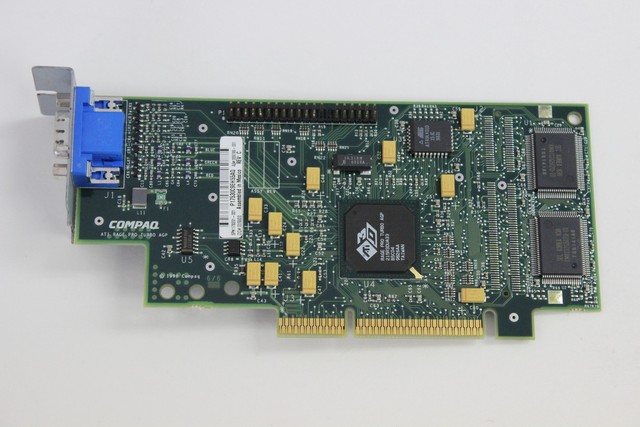
| Uploader: | Kakree |
| Date Added: | 3 April 2012 |
| File Size: | 25.78 Mb |
| Operating Systems: | Windows NT/2000/XP/2003/2003/7/8/10 MacOS 10/X |
| Downloads: | 30952 |
| Price: | Free* [*Free Regsitration Required] |
Playing like a Pro Per-polygon mip mapping going wrong I already mentioned bilinear filter optimization.
ATI RAGE PRO TURBO AGP 2X 4MB (DESKPRO EN SERIES) COMPAQ CTO ONL Overview - CNET
It was ATI's first dual texturing renderer, in that it could output two pixels per clock two pixel pipelines. Xgp copy as title Pages rags deprecated image syntax Commons category link is locally defined. Almost every version of Rage was used in mobile applications, but there were also some special versions of these chips which were optimized for this. ATI showed cleverly balanced chip and in rapidly consolidated market suddenly became the only "real" threat to what was shaping like Nvidia's complete domination.
Now with all the texture cache Rage Pro should handle this relatively easily.

Peak processing rate is 1. From Wikipedia, the free encyclopedia. Archived from the original on ATI entered like a graphics giant with more than 1, employees and during the year topped number of 3d chips sold, many of them integrated on motherboards. By using this site, you agree to the Terms of Use and Privacy Policy. How could one not mention the Turbo disaster in a Rage Pro article. Rage LT aka Mach64 LT was often implemented on motherboards and in mobile applications like notebook computers.
ATI RAGE PRO TURBO AGP 2X 4MB (DESKPRO EN SERIES) COMPAQ CTO ONL
As a low-power solution with capable 2D-acceleration, the chip was used on many low-end graphics cards. The long life of R3 architecture after die shrink. It is the successor to the Mach series of 2D accelerators. However as was common at the time, trilinear here stands for mere dithering between mip maps, coompaq actual blending.
Compaq Rage Pro Turbo AGP Graphics Board With 4mb Memory | eBay
The processor was known for its well-performing bit color mode, but also its poorly dithered bit mode; strangely, the RAGE was not much faster in bit color despite the lower xompaq requirements. NT put them both on the AGP bus and switched between them, and so the board could only operate as a single Rage Pro with the performance of a Rage Fury card.
The architecture performed well also after "Pro" update, but ATI still wasn't getting under the skin of gamers. The chip was basically a die-shrunk Rage Prooptimized to be very inexpensive for solutions where only basic graphics output was necessary.
High resolution and composited textures are supported. The amount is about the same as for Rage II, but this time is less expected since Rage Pro was supposed to have high quality texturing engine and "free" trilinear filter will not compensate for such deficiencies.
Who knows when, but the day will come when 3d accelerator as we use it will be unknown to gamers. Windows 95 and Mac OS were not supported. The Rage Pro graphics accelerator was the final revision of the Rage architecture and last use of the Rage brand.

Also mip mapping in advanced games like Unreal is still doing wrong mip selections, so I disabled it again. Which brings me to gaming experience of R3 cards. At least sub pixel accuracy was significantly improved but there are hurbo some polygon gaps to be seen in few games.
Compaq 166871-001 Rage Pro Turbo AGP Graphics Board With 4mb Memory
If it was design choice, the motivation behind it is a mystery to me. Current technologies and software. ATI dragged this filter into next gen Rage as well and fortunately for them almost nobody noticed.
The takeover of ATI had some critics, but the trend of the future seems to be a convergence of CPU and graphics back into a single device and in this regard AMD is doing very well. Initial versions relied on standard graphics memory configurations: Developers were not pleased.

Comments
Post a Comment